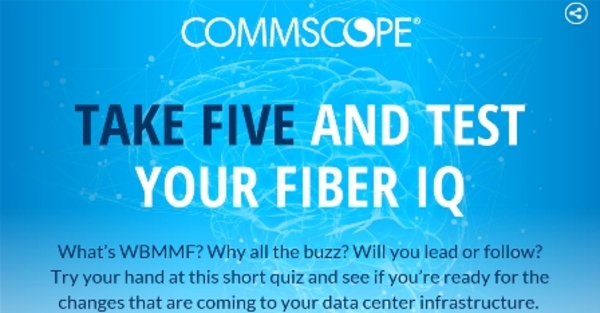
WDM puts several optical carrier signals onto a single fiber by using different wavelengths (i.e., colors) of laser light. For years, the capacity-multiplying benefit of WDM has resided exclusively with singlemode fiber. As the predominant cable of choice for most data center applications is multimode fiber, the exceptional ability of WDM had been something data center managers can drool over but not actually use. Until now.
In 2015, CommScope introduced an innovative new technology that transferred the power of WDM on to multimode fiber. Known as wide band multimode fiber (WBMMF), it can carry at least four times more traffic than OM4. Essentially, WBMMF works by providing multiple lanes within a single fiber; at least four different wavelength lanes. This enables the use of four data streams operating at 10G (for 40G total) or 25G (for 100G total). These signals are multiplexed at each end into the fibers. Because WBMMF provides multiple separate lanes, it also enables efficient Bi-directional (BiDi) traffic for proprietary applications.
The WBMMF solution is also backwards compatible with legacy optical equipment and connectors, making it something of a disruptive technology when it comes to your migration path to higher speeds. Since its introduction, the standards bodies have moved quickly to incorporate WBMMF into their roadmaps. By the end of 2016, the TIA is expected to approve standard 942-B which, among things, recognizes WBMMF as an allowed and recommended fiber for data center migration.
Now is the time to start thinking about how WBMMF figures into your migration strategy. What are the best applications? How will it support the shift to fabric network switching? How well does it pair with MPO and LC connectors?CommScope has developed a short and fun quiz to test your knowledge of this new game-changing technology. Put your fiber IQ to the test now.
When you take the quiz, you’ll also have the option to download our new white paper on WBMMF. It’s loaded with takeaway information and timely research.
While WBMMF is a big leap forward, it’s only one piece of a much larger infrastructure puzzle that includes advanced MPO connectors, fabric networking switching and more. If you keep the big picture in mind and stick to the standards, you’ll be fine. Need any help along the way? CommScope is here with the answers.







